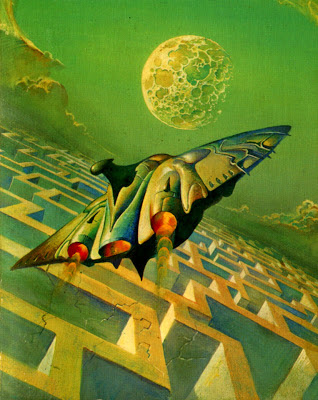Continuing my exploration of the inimical ssraad:
BLUE SSRAAD
No. Appearing: 2-12
AC: 4
HD: 8
Saving Throw: 11
Attack Bonus: +8/+8/+8
Damage: 2d6/2d6 claws, 1d12 bite
Movement: 30’
Morale: 12
The blue ssraad make their lair in stolen asteroid habitats huddled close to the cinder of Sirius B. From this base, they launch raids across the Expanse and wage a grinding war against the green ssraad holding Sirius A.
The hulking blue (3 m tall) are the most massive of the ssraad species and are more intelligent and organized than the red. Still, they have no hierarchy beyond the tribal level, where the strongest rule, and what technology they possess is stolen. They force captives to remodel their starships for the ssraad’s large frames before they kill them. They can employ weapons, but they prefer to use the bone spur claws that grow from dorsal surface of their hands, and their massive jaws.
Ssraad reproduce asexually. Dominance challenges between ssraad can lead to slashes along the back of the loser by the victor’s bone spurs that (combined with chemicals introduced into the loser’s bloodstream from the victor’s saliva) stimulate grow of eggs beneath osteodermic plates on the loser’s back. These eventually bud off into larva, to which the adults pay little attention. The victor sometimes passes genetic material to the loser’s eggs through his saliva in a manner similar to bacterial conjugation.
1 hour ago












.jpg)






